The great migration is, as the name suggests, great and the scale of the even can sometimes make it difficult from a photography point of view.
You see, people often think that the more subjects you have to photograph, the easier it is. On the contrary, the more subjects there are the more intentional you have to be when looking through the viewfinder to find images that work.
This is a pretty stock standard migration which shows a large herd of wildebeest crossing the river.
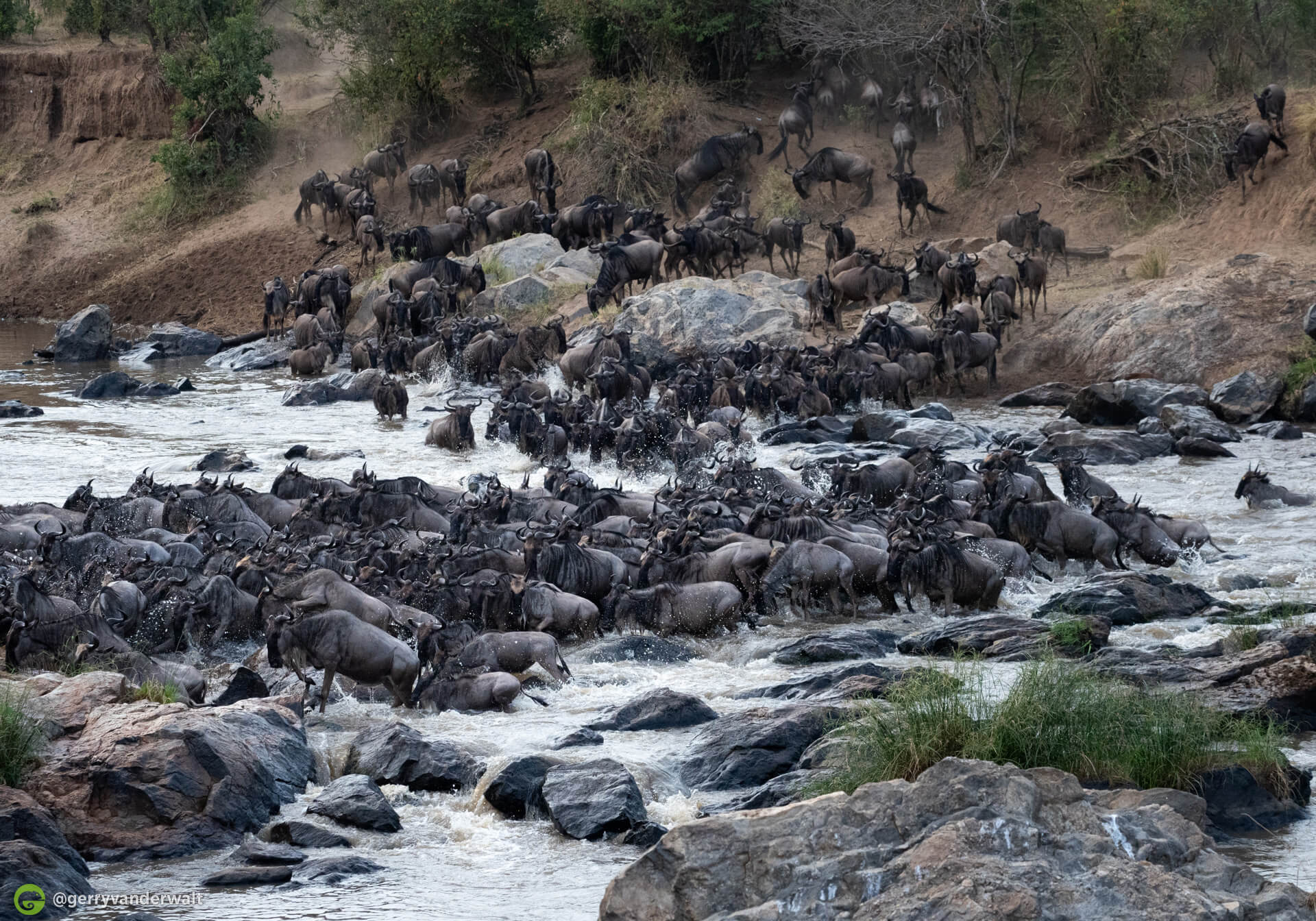
Is it a nice image? Sure.
Is it a great image? Nah, I don't necassarily think so but this, I guess, is a matter of opinion.
The one thing we can agree on is that there really is no one gnu in particular that stands out and that the frame is dominated by the herd. I hope we can also agree that that images like these are pretty easy to get and if you've been on a Migration safari with us you'll know what I say that. If not, guess you'll have to join us and find out.
Now here's the thing.
What do most photographers do when the dust settles and the last wet gnu makes it's way out of the river?
Yes, you start scrolling through your images looking for shots that stand out. Shots that are different. Shots that you stop on, zoom in and show to the people who are with you in the vehicle. And more often than not you'll find that it's the images with a single animal, or an animal that begs for attention in all the visual chaos, that stands out. One animal on it's own or that looks isolated or that is looking into the camera while the rest of the animals are just focusing straight ahead.
An image like this, of a single young wildebeest jumping into the Mara river, will stand out when you're scrolling through your images because it's different.
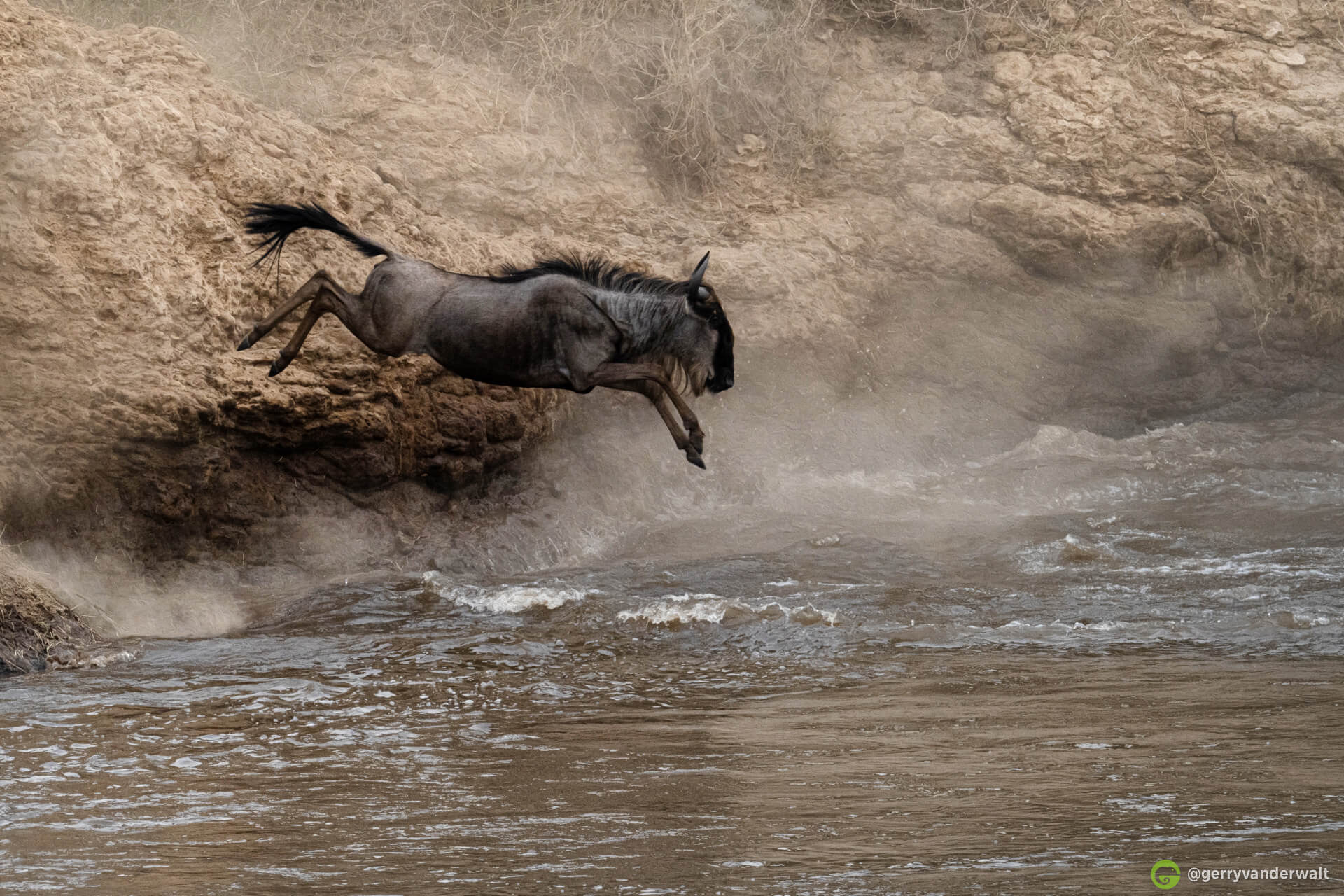
It also doesn't have to be as in your face as that example.
An image, like the one below, where the one wildebeest stands out because of movement or body position or action, will also stand out when you're looking through your images.
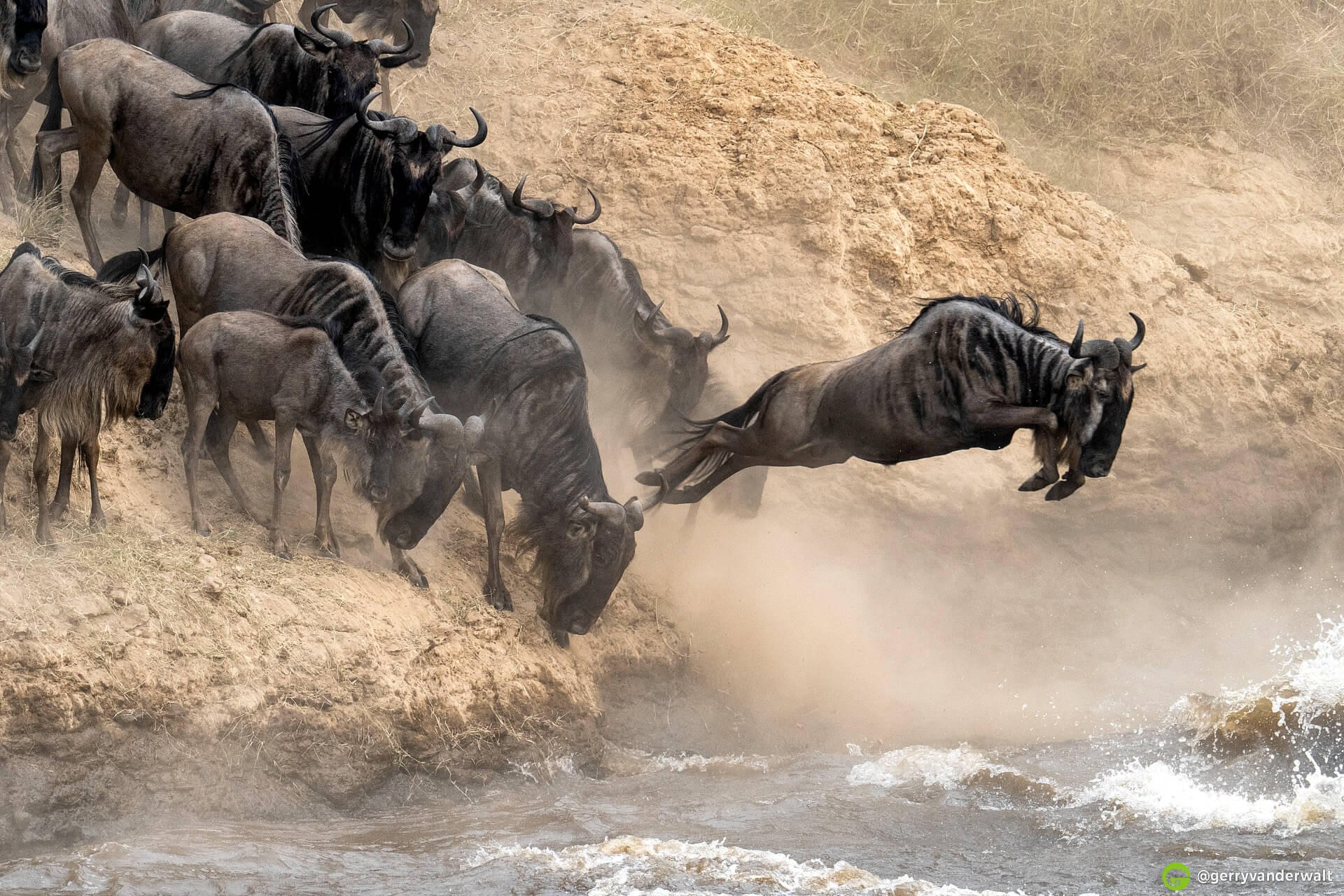
One of the other ways to make an individual animal stand out is to look for a zebra in a herd of wildebeest or a wildebeest in a herd of zebra.
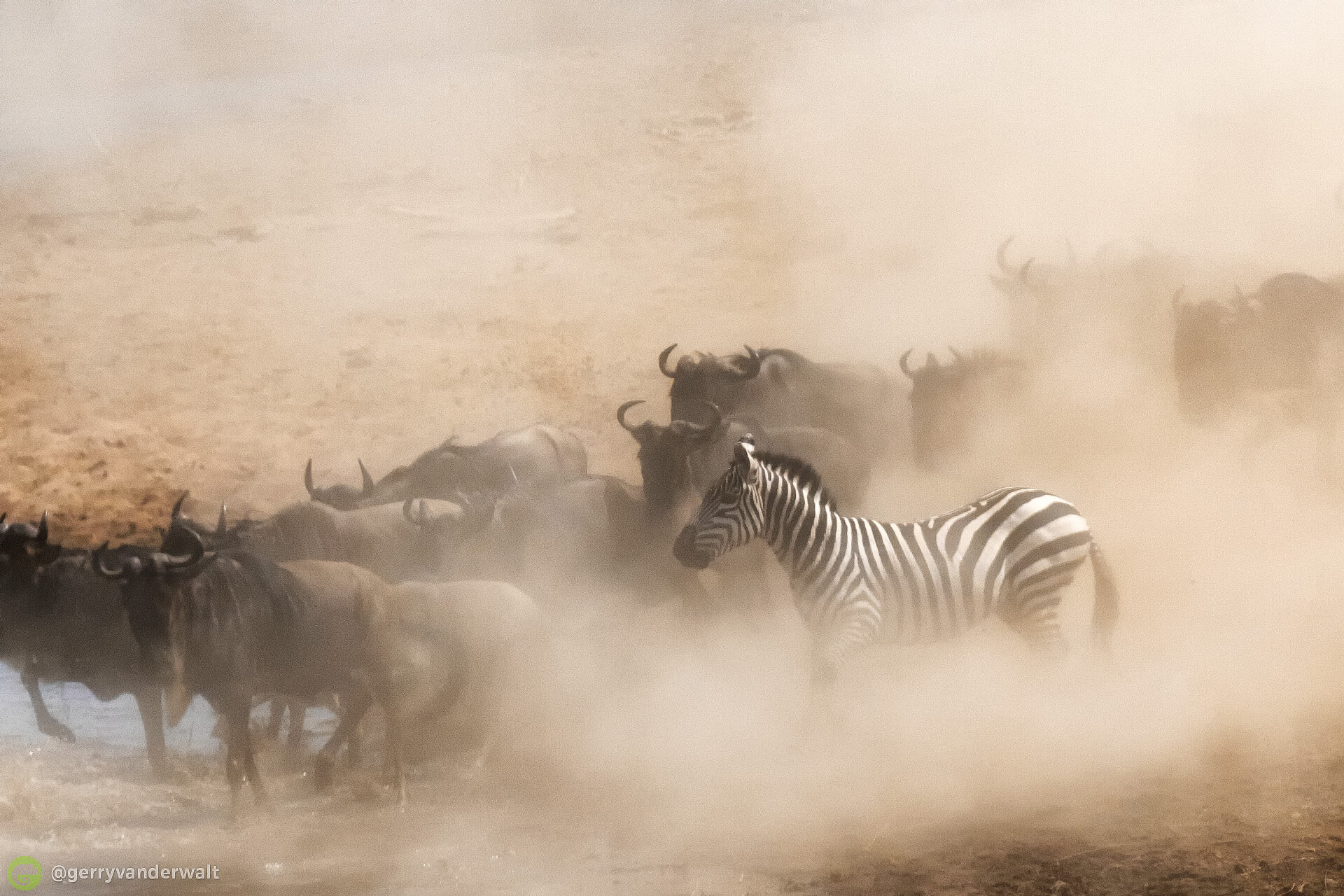
So next time you're photographing a large herd of wildebeest, or a large herd of anything for that matter, make sure you don't end up getting all stressed out while trying to figure out how to photograph the scene and rather look for and try to focus on individual animals.
Yes, by all means shoot the herds and the chaos and the wide shots, but don't get stuck there.
An image like the one below, easy.
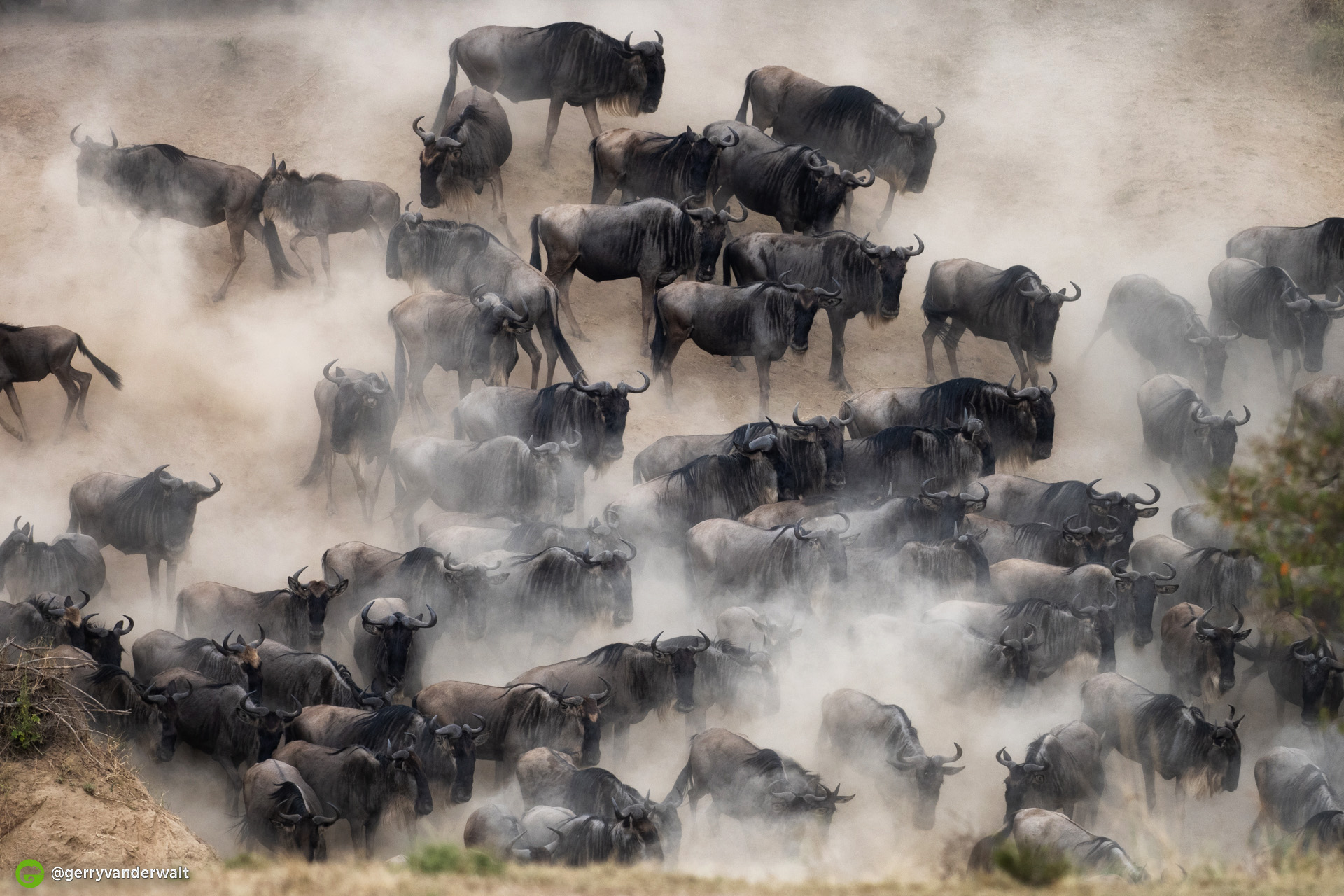
Look deeper into the scene and you'll find moments that will not only make for stronger images but you'll have a much more diverse portfolio of images.
Happy shooting.
Until next time.
Gerry
